How To Clean and Maintain a Litter Box for Rabbit Effectively
Master the art of keeping your rabbit's litter box clean with our effective tips. Ensure a healthy, odor-free environment for your bunny.
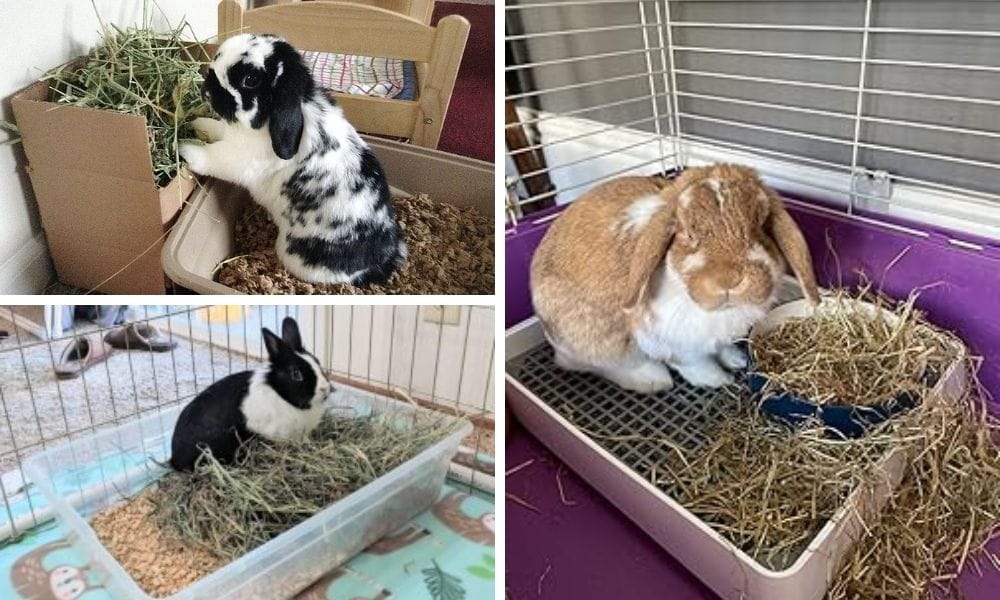
Keeping your rabbit's litter box clean is not just about odor control; it's about the health and happiness of your furry friend. Rabbits are clean animals by nature, and a well-maintained litter box can prevent the development of urinary tract and respiratory issues. In this comprehensive guide, we'll walk you through the steps and tips to ensure your bunny's litter box is pristine and safe.
Key Takeaways:
- Regular cleaning and maintenance of the rabbit litter box prevent health issues and odor.
- Choosing the right type of litter and litter box can significantly ease the cleaning process.
- Proper placement and training are crucial for effective litter box use by rabbits.
Choosing the Right Litter Box
Selecting an appropriate litter box is the first step in our journey. Finding the best litter box involves considering the specific needs of rabbits, emphasizing ease of cleaning, durability, and suitability. For rabbits, a large, shallow box works best because it gives them enough room to move around. Covered litter boxes might seem like a good idea for controlling odor, but they can make some rabbits feel trapped. It’s essential to consider the size and personality of your bunny when picking out a litter box, keeping in mind that a bunny litter box is designed with rabbits' unique needs in mind.
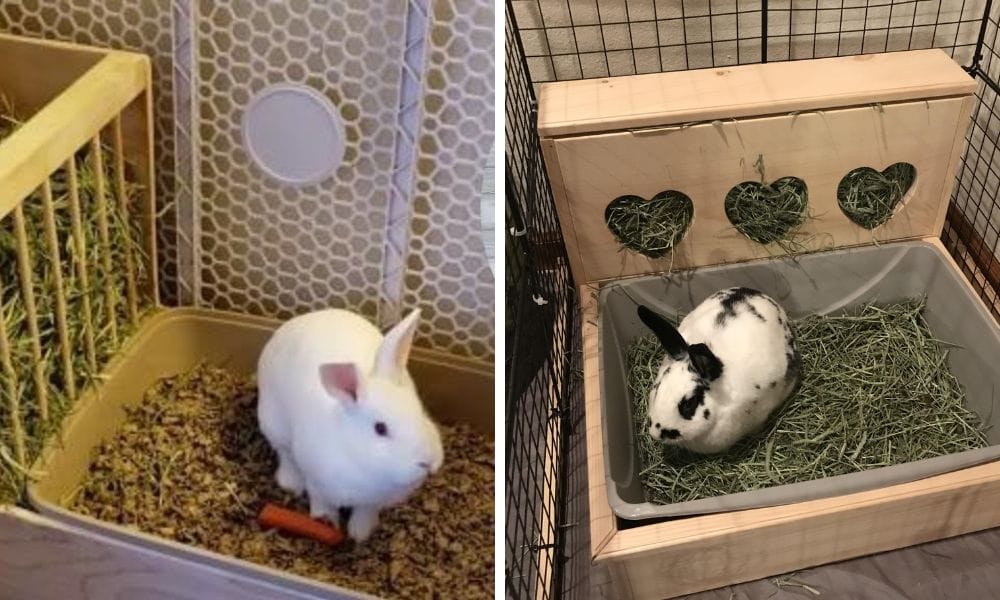
Types of Litter Suitable for Rabbits
When it comes to filling the litter box, not all types of litter are safe for rabbits. Paper-based products, especially paper litter, are excellent choices because they are absorbent, digestible if ingested, and offer additional benefits such as being gentle on rabbit's feet, providing superior odor control, and being cost-effective. Wood pellets can also be used, but avoid cedar or pine as they can cause liver damage and respiratory issues in rabbits. Steer clear of clumping cat litter, as it can be harmful if eaten.
The Daily Scoop
Daily maintenance of your rabbit’s litter box is crucial. Remove soiled bedding and droppings using a scoop every day. This not only keeps the box fresh but also encourages your rabbit to keep using it. Regular scooping prevents the buildup of ammonia, which can harm your rabbit’s respiratory system.
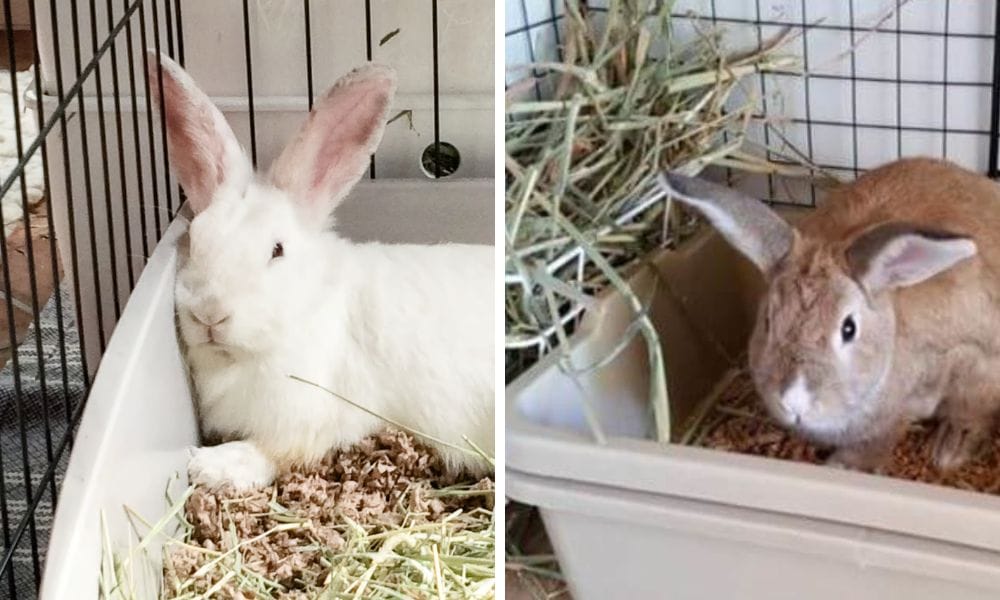
Weekly Washing Ritual
Once a week, it’s time for a deep clean. Empty the litter box completely and scrub it with a mixture of water and vinegar to remove lingering odors and stains. Avoid using chemical cleaners as they can leave behind fumes that are toxic to your bunny. After washing, dry the litter box thoroughly before adding fresh litter.
Right Placement Matters
The location of the litter box in your rabbit's enclosure can affect how well it is used. Rabbits often choose a favorite corner to do their business. Placing the litter box in this chosen corner can make litter box training much easier. Ensure the area is quiet and safe, away from high traffic zones to make your rabbit feel secure.
Litter Training Your Bunny
Litter training a rabbit is not only about placing them in a box; it's crucial to employ effective litter train techniques such as providing designated litter areas and using hay in the litter boxes to encourage proper habits. Similar to training a cat, place your bunny in the litter box after meals and naps because rabbits often need to go at these times. If you see your rabbit using the litter box, a gentle praise or a treat can work wonders as positive reinforcement. Consistency is key in litter training.
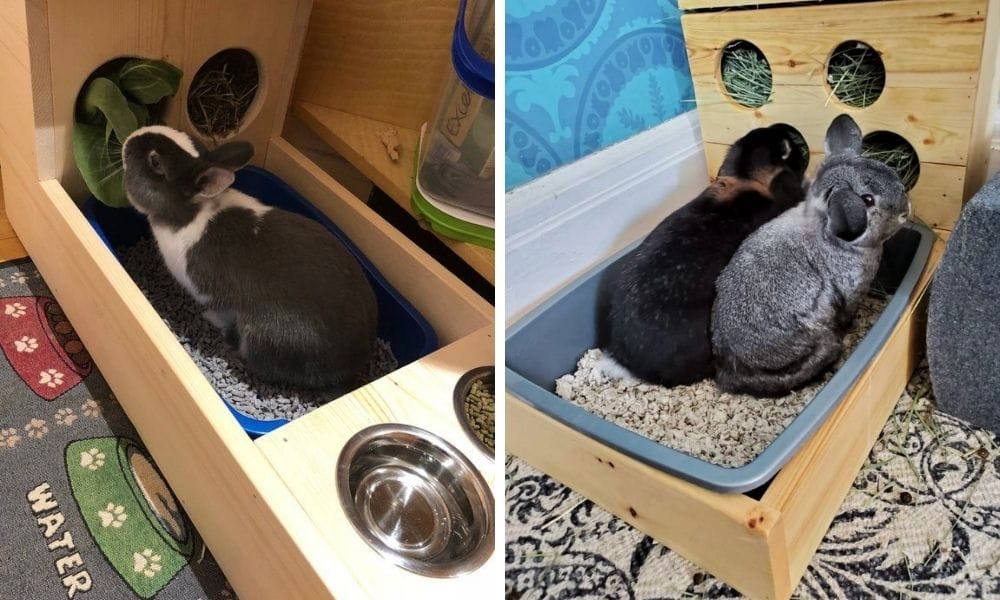
Enhancing Comfort with Covered Litter Boxes
When considering the comfort and privacy of your pet rabbit, a covered litter box can be a game-changer. Covered boxes not only help to contain odors but also provide your bunny with a secluded spot to do their business, which can be particularly appealing to more timid rabbits. Imagine a little private haven where your bunny can feel secure — much like a mini retreat for their daily needs. This setup not only supports their natural instincts for privacy but also aids in maintaining a cleaner and more odor-controlled environment in your home.
Moreover, transitioning to a covered litter box might seem like a small change but it can significantly reduce the scatter of litter outside the box. Rabbits, by nature, tend to dig and forage, and a covered design helps to keep all the mess contained within a confined space. This means less time cleaning up stray litter around the house and more quality time with your furry friend. For bunny parents, this is a practical solution that makes life a little easier, ensuring that your home remains neat and your rabbit content in their personal space.
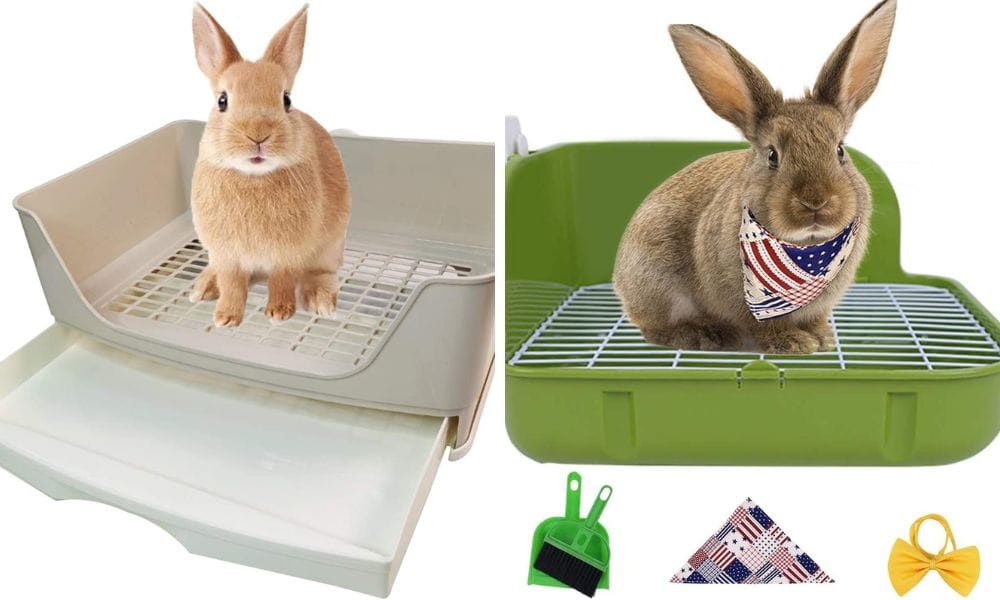
Integrating Multiple Boxes for Multiple Bunnies
When you're a bunny parent managing a fluffle, integrating multiple litter boxes can be a game-changer. If you've noticed your bunnies competing for space or have a large enclosure, adding extra boxes ensures everyone has enough room to do their business without a hitch. This strategy not only reduces stress among your rabbits but also keeps the litter boxes cleaner for longer, as the load is distributed. It's a simple yet effective way to maintain harmony and cleanliness in a multi-rabbit home.
Moreover, placing these multiple boxes in various favorite corners of your bunnies’ living space can significantly aid in litter box training. Rabbits tend to choose consistent spots to relieve themselves. By observing where your bunnies prefer to go, and strategically placing litter boxes there, you make it super easy for them to adopt good habits. This approach not only simplifies cleaning for you but also makes your rabbits feel more comfortable and secure in their environment, encouraging regular use of the litter box.
Optimizing Litter Box Placement for Maximum Bunny Happiness
When setting up a litter box for your rabbit, think of it as real estate where location is key. Placing the litter box in a quiet corner where your bunny feels safe yet is easily accessible can significantly encourage its use. Rabbits often choose corners to do their business, so aligning the litter box with this natural preference makes training smoother. Ensure the area is free from drafts and not too close to their feeding area, as rabbits like to keep their eating and bathroom spaces distinctly separate.
Moreover, the placement shouldn't just be about the bunny's preference but also about ease of cleaning for the bunny parent. A strategically placed litter box means less mess spreading across the enclosure, making it super easy to maintain hygiene. Consider the type of flooring under and around the litter box; non-porous surfaces are ideal as they don’t soak up odors and are simpler to clean. If you have multiple boxes, space them out to avoid any territorial disputes among your small animals, ensuring peace in the bunny's living quarters.
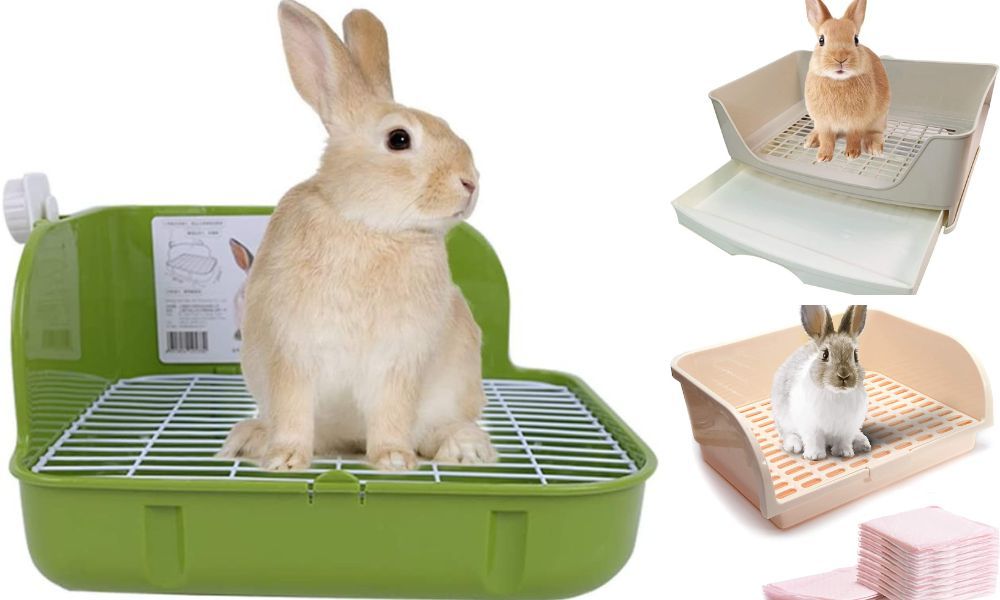
The Science Behind Choosing the Right Litter Material
Selecting the appropriate litter for your rabbit isn’t just about odor control; it’s about health and comfort too. Paper pellets and shredded paper are among the best choices as they are soft on bunny feet, highly absorbent, and keep the smell down. Customer feedback on litter pans and litter trays highlights their size, appearance, durability, and ease of cleaning, emphasizing their suitability for rabbits in terms of design and functionality. Avoid using cat litter, as many types can cause respiratory issues in rabbits due to dust or harmful chemicals. Instead, opt for products designed specifically for small animals, which are safer and often made from recycled paper.
Wood pellets are another excellent option; they’re not only economical but also highly effective at controlling odor. They absorb urine quickly and neutralize the smell, making the litter box environment more pleasant for both you and your pet. When choosing litter, always consider how easy it is to clean up. Paper-based products are generally easier to handle and can be changed without much hassle, saving so much time and effort for every bunny parent.
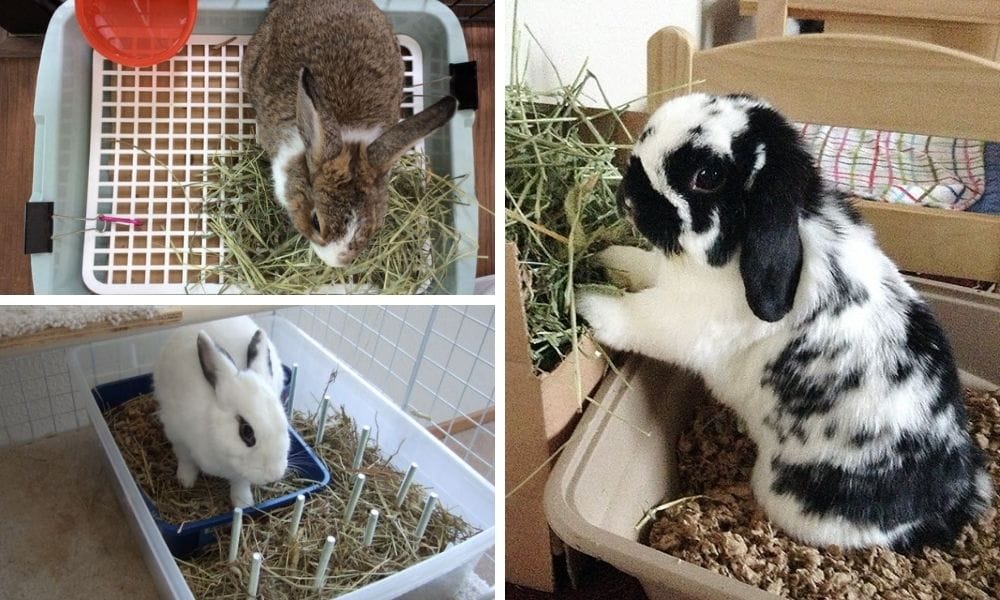
The Benefits of Deep Litter Trays for Rabbit Comfort
Deep litter trays are a boon for bunny parents looking to provide their pets with a comfortable and inviting bathroom space. These trays allow for a generous layer of litter, which is essential for absorbing urine and reducing odors. The depth also gives bunnies the opportunity to dig and burrow, mimicking their natural behaviors, which can be incredibly satisfying for them. This can lead to a happier, more content rabbit, as they engage in instinctual activities safely within their enclosure.
Additionally, deep trays help in keeping the surrounding area clean. With high sides, these trays catch stray litter and prevent it from spilling out when rabbits hop in and out. This design feature is crucial for maintaining a tidy space and minimizes the time you spend sweeping up litter outside the box. For bunny parents, this means less mess, less stress, and more time to enjoy with their furry friends. Deep litter trays are not just functional; they enhance the quality of life for both rabbits and their owners.
The Role of Paper Bedding in Rabbit Litter Boxes
Choosing the right bedding for your rabbit's litter box is crucial for their health and comfort. Paper bedding, for instance, is a fantastic choice for several reasons. Firstly, it's highly absorbent, making it effective at controlling odors and keeping the litter box dry. This is essential as a damp environment can harbor bacteria and cause health issues for your bunny. Secondly, paper bedding is soft and gentle on rabbit's feet, preventing sore hocks, which are a common problem in rabbits kept on harder substrates.
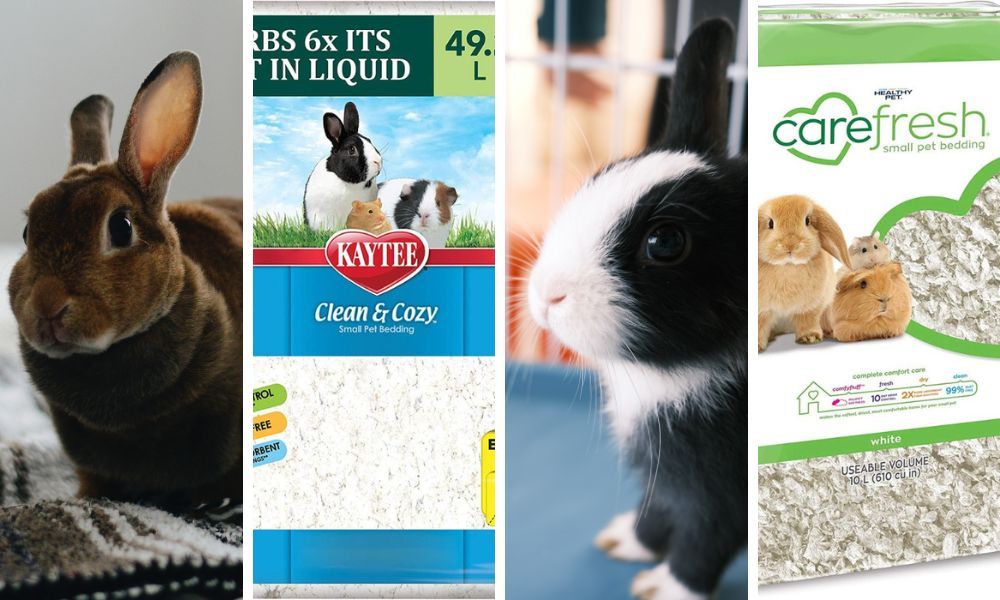
Additionally, paper bedding is typically made from recycled paper, making it an environmentally friendly option for eco-conscious bunny parents. It's also generally dust-free, which is vital for maintaining good respiratory health in your rabbit. When used in conjunction with a well-maintained litter box, paper bedding can make the litter box cleaning process super easy and more efficient. This not only saves time but also ensures a hygienic living space for your pet, contributing to their overall well-being and happiness.
Monitoring for Health Issues
While cleaning, keep an eye out for any changes in the quantity or quality of your rabbit’s urine and feces. Changes can be early indicators of health issues. If you notice any significant changes, such as a lot of urine or excessively wet litter, consult your veterinarian. This could be a sign of a urinary tract infection or other health concerns.
Handling Odor Effectively
To manage odor effectively, consider adding a thin layer of baking soda under the litter. This can help neutralize odors without harming your rabbit. Additionally, maintaining a regular cleaning schedule and ensuring proper ventilation in the area where the litter box is located can also help keep odors at bay.
Choosing the Best Litter
The best litter for your rabbit will be highly absorbent, low in dust, and easy to clean. Paper pellets are often recommended because they meet all these criteria and are also environmentally friendly. Avoid litters with added deodorants or baking powders, as these can cause issues if ingested.
Avoiding Common Mistakes
One common mistake is not providing enough litter boxes or litter pan for the number of rabbits you have. If you have multiple rabbits, you might need multiple boxes to prevent territorial disputes. Another mistake is using scented litters, which can irritate your rabbit’s sensitive nose.
Summary
Maintaining a clean and effective litter box for your rabbit involves choosing the right type and size of the box, selecting safe and absorbent litter, and establishing a consistent cleaning routine. By following these guidelines, you can ensure a hygienic living environment for your pet, preventing health issues and keeping odors under control.
FAQ
What is the best type of litter for a rabbit?
The best type of litter for rabbits is paper-based, such as paper pellets or shredded paper, because it is safe if ingested, highly absorbent, and easy to clean.
How often should I clean my rabbit's litter box?
You should scoop the litter box daily and perform a deep clean at least once a week to prevent the buildup of harmful bacteria and odors.
Can I use cat litter for my rabbit's litter box?
It is not recommended to use clumping cat litter as it can be harmful if ingested by rabbits. Stick to rabbit-safe litters like paper pellets or wood pellets (excluding cedar and pine).

